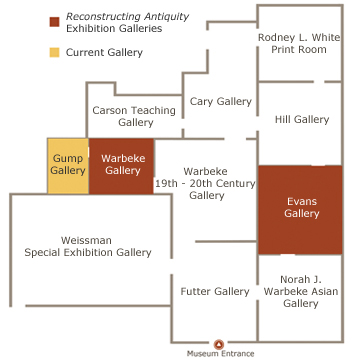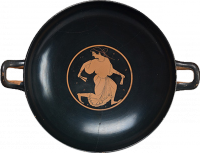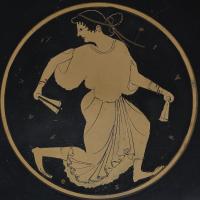Dancing woman, possibly a maenad
Learn more about the object below
This kylix, or drinking cup, was made in Athens around 525-500 BCE, just as the so-called Pioneering style of red-figure pottery painting was evolving into the more naturalistic manner of the Late Archaic. The full efflorescence of Greek Classical art would only occur more than a century later, however, as exemplified in the nearby bell krater (number 68) dating from 425-400 BCE. The presumed creator of the Dancing Woman—a painter named Oltos whose signature appears on two comparable cups in museums in Europe—is known for the elegant simplicity of his single-figure compositions.
Mount Holyoke’s Dancing Woman may represent a maenad, one of the most popular members of the mythical entourage of Dionysus, the Greek god of wine. Expressing the spirit of the “divine frenzy” associated with rituals dedicated to the deity, she dances ecstatically to the music of her own krotala, or castenets. Alternatively, she might represent one of the female entertainers who were often present at the secular drinking parties known as symposia. In either case, wine fuels her rapture, and the words “beautiful, beautiful” inscribed within the border of the tondo underscore the transcendent appeal of her behavior. Being a wine goblet, the kylix’s imagery may only have revealed itself as its owner was draining its contents, the dancing figure anticipating the liberating effects to come.
Label text by John Varriano, Professor Emeritus of Art History, Mount Holyoke College.



